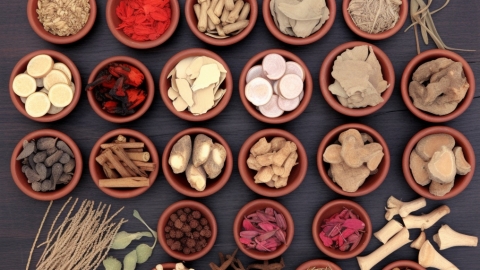What are the traditional Chinese medicine methods for treating endometritis?
Traditional Chinese Medicine (TCM) offers various treatments for endometritis, including oral herbal medicine, herbal enema, acupuncture, acupoint application, and herbal sitz baths. Treatment should be individualized based on the patient's specific pattern differentiation, with emphasis on overall body regulation. If severe lower abdominal pain, fever, or abnormal bleeding occurs, prompt medical evaluation is recommended to clarify the condition.
1. Oral Herbal Medicine: Herbal formulas are selected according to the patient’s pattern. For instance, patients with damp-heat and blood stasis are treated with herbs that clear heat, resolve dampness, activate blood circulation, and remove blood stasis; those with cold-induced blood stasis receive warming herbs that dispel cold, promote blood flow, and relieve pain. Oral administration helps regulate internal organs and qi-blood balance, eliminating pathogenic factors such as dampness, heat, and toxic stagnation at the site of inflammation.
2. Herbal Enema: Decoctions containing herbs with heat-clearing, detoxifying, blood-activating, and stasis-resolving effects are administered rectally. The medication is absorbed through the rectal mucosa directly into the pelvic cavity, minimizing gastrointestinal irritation from oral medications and allowing more targeted action on the uterus and adnexal regions.

3. Acupuncture Therapy: Key acupoints such as Guanyuan (CV4), Qihai (CV6), and Sanyinjiao (SP6) are stimulated via needle insertion or moxibustion to unblock meridians, regulate qi and blood flow, improve pelvic circulation, and alleviate symptoms such as lower abdominal heaviness and pain.
4. Acupoint Application: Herbal ointments are applied externally to abdominal acupoints (e.g., Shenque CV8, Guanyuan CV4). The medicine penetrates through the skin to warm the meridians, unblock collaterals, resolve stasis, and relieve pain, making this method particularly suitable for patients with chronic inflammation.
5. Herbal Sitz Bath: For patients with vaginal itching or abnormal discharge, a decoction of herbs that clear heat, dry dampness, and relieve itching is used for sitz baths. This helps cleanse the external genitalia, reduce local inflammation, and relieve discomfort in the vulvar area.
In daily life, it is important to maintain cleanliness and dryness of the external genitalia and wear cotton, breathable underwear. Avoid overexertion or exposure to cold during menstruation to reduce pelvic congestion. Diet should avoid spicy and raw-cold foods; instead, consume light, easily digestible foods to support recovery.








